1,1-DIFLUOROETHYLENE
- CAS NO.:75-38-7
- Empirical Formula: C2H2F2
- Molecular Weight: 64.03
- MDL number: MFCD00000448
- EINECS: 200-867-7
- SAFETY DATA SHEET (SDS)
- Update Date: 2024-12-18 14:08:57
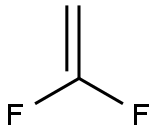
What is 1,1-DIFLUOROETHYLENE?
Chemical properties
Colorless gas; faint ethereal odor. Slightly soluble in water; soluble in alcohol and ether.
Chemical properties
Vinylidene fluoride is a colorless gas. Faint ethereal odor. Shipped as a liquefied compressed gas.
The Uses of 1,1-DIFLUOROETHYLENE
1,1-Difluoroethylene is used in the manufacture of polyvinylidene fluoride for its use as a thermal, chemical, and ultraviolet light–resistant agent, and as an anticorrosive agent. The monofilament form is used as filter cloth in the pulp and paper industry. Due to its high melting temperature, it can be used as an insulator. Some of its copolymers are used for their heat- and moisture-resistant properties, primarily in industrial, aerospace, and automotive applications.
The Uses of 1,1-DIFLUOROETHYLENE
Polymers and copolymers, chemical intermediate.
Definition
ChEBI: Vinylidene fluoride is an organofluorine compound and an olefinic compound.
General Description
1,1-DIFLUOROETHYLENE (or vinylidene fluoride) is a colorless gas which is flammable in the ranges of 5.5 to 21%. 1,1-DIFLUOROETHYLENE is toxic by inhalation and contact. 1,1-DIFLUOROETHYLENE is slightly soluble in water and soluble in alcohol and ether. Under prolonged exposure to fire or intense heat the containers may rupture violently and rocket.
Reactivity Profile
1,1-DIFLUOROETHYLENE is sensitive to heat. 1,1-DIFLUOROETHYLENE is incompatible with oxidizers. 1,1-DIFLUOROETHYLENE can react violently with hydrogen chloride. Alkyl boron and alkyl hyponitrite compounds initiate polymerization. 1,1-DIFLUOROETHYLENE will form peroxides on exposure to pure oxygen. .
Health Hazard
Vapors may cause dizziness or asphyxiation without warning. Some may be toxic if inhaled at high concentrations. Contact with gas or liquefied gas may cause burns, severe injury and/or frostbite. Fire may produce irritating and/or toxic gases.
Fire Hazard
EXTREMELY FLAMMABLE. Will be easily ignited by heat, sparks or flames. Will form explosive mixtures with air. Silane will ignite spontaneously in air. May polymerize explosively when heated or involved in a fire. Vapors from liquefied gas are initially heavier than air and spread along ground. Vapors may travel to source of ignition and flash back. Cylinders exposed to fire may vent and release flammable gas through pressure relief devices. Containers may explode when heated. Ruptured cylinders may rocket.
Safety Profile
Suspected carcinogen with experimental neoplastigenic data. Mildly toxic by inhalation. Mutation data reported. A very dangerous fire hazard when exposed to heat, flame, or oxidzers. Explosive in the form of vapor when exposed to heat or flame. Violent reaction with hydrogen chloride when heated under pressure. To fight fire, stop flow of gas. When heated to decomposition it emits toxic fumes of F-. See also FLUORIDES.
Potential Exposure
Vinylidene fluoride is used in the formulation of many polymers and copolymers, such as chlorotrifluoroethylene-vinylidene fluoride (Kel F), perfluoropropylene-vinylidene fluoride (Viton, Fluorel); polyvinylidene fluoride; and hexafluoropropylene-tetra-fluoroethylene- vinylidene fluoride; elastomeric copolymers. It is also used as a chemical intermediate in organic synthesis. NIOSH has estimated 32,000 workers are exposed annually.
Environmental Fate
Oxidative metabolism of 1,1-Difluoroethylene is mediated by the hepatic microsomal monooxygenase to form epoxide and the inactivation of hemeprotein.
Shipping
UN1959 Vinylidene fluoride shipped as 1,1-Difluoroethylene or Refrigerant gas R-1132a, Hazard Class: 2.1; Labels: 2.1-Flammable gas. Cylinders must be transported in a secure upright position, in a well-ventilated truck. Protect cylinder and labels from physical damage. The owner of the compressed gas cylinder is the only entity allowed by federal law (49CFR) to transport and refill them. It is a violation of transportation regulations to refill compressed gas cylinders without the express written permission of the owner.
Toxicity evaluation
1,1-Difluoroethylene is a colorless gas. It is slightly soluble in
water, but soluble in organic solvents such as alcohol and
ether. Its boiling point is -85°C, melting point is -144°C,
specific gravity is 0.617 g cm-3, and vapor pressure is
3.0×104 mm Hg. Its octane/water partition coefficient is 1.24
and Henry’s law constant is 0.4 atm-m3 mol-1.
Production and use of 1,1-Difluoroethylene result in its
release to the environment through various waste streams. It
has medium mobility in soil and degrades in soil. It volatilizes
from the contaminated water. Aquatic bioconcentration and
adsorption to sediment are not very significant. As a gas form in
the atmosphere, it reacts with photochemically produced
hydroxyl radicals and degrades.
Incompatibilities
idizers (chlorates, nitrates, peroxides, permanganates, perchlorates, chlorine, bromine, fluorine, etc.); contact may cause fires or explosions. Keep away from alkaline materials, strong bases, strong acids, oxoacids, epoxides, aluminum chloride. Capable of forming unstable peroxides, which can cause explosive polymerization. It can re act violently with hydrogen chloride. Alkyl boron and alkyl hyponitrite compounds initiate polymerization. It will form peroxides on exposure to pure oxygen. May accumulate static electricity, and cause ignition of its vapors.
Waste Disposal
Return refillable compressed gas cylinders to supplier.
Properties of 1,1-DIFLUOROETHYLENE
| Melting point: | −144 °C(lit.) |
| Boiling point: | −83 °C(lit.) |
| Density | 0,617 g/cm3 |
| vapor density | 2.2 (vs air) |
| vapor pressure | 518 psi ( 21 °C) |
| refractive index | 1.3225 (estimate) |
| Flash point: | <-60°C |
| explosive limit | 21.3% |
| BRN | 1733321 |
| Dielectric constant | 3.0(Ambient) |
| CAS DataBase Reference | 75-38-7(CAS DataBase Reference) |
| IARC | 3 (Vol. 39, Sup 7, 71) 1999 |
| EPA Substance Registry System | Vinylidene fluoride (75-38-7) |
Safety information for 1,1-DIFLUOROETHYLENE
| Signal word | Danger |
| Pictogram(s) |
 Flame Flammables GHS02  Gas Cylinder Compressed Gases GHS04 |
| GHS Hazard Statements |
H220:Flammable gases H280:Gases under pressure |
| Precautionary Statement Codes |
P210:Keep away from heat/sparks/open flames/hot surfaces. — No smoking. P377:Leaking gas fire: Do not extinguish, unless leak can be stopped safely. P381:Eliminate all ignition sources if safe to do so. P410+P403:Protect from sunlight. Store in a well-ventilated place. |
Computed Descriptors for 1,1-DIFLUOROETHYLENE
New Products
4-Fluorophenylacetic acid 4-Methylphenylacetic acid N-Boc-D-alaninol N-BOC-D/L-ALANINOL Tert-butyl bis(2-chloroethyl)carbamate 3-Morpholino-1-(4-nitrophenyl)-5,6-dihydropyridin- 2(1H)-one Furan-2,5-Dicarboxylic Acid Tropic acid S-2-CHLORO PROPIONIC ACID ETHYL ISOCYANOACETATE 2-Bromo-1,3-Bis(Dimethylamino)Trimethinium Hexafluorophosphate (6-METHYL-[1,3]DITHIOLO[4,5-b]QUINOXALIN-2-ONE INDAZOLE-3-CARBOXYLIC ACID 4-IODO BENZOIC ACID (2-Hydroxyphenyl)acetonitrile 4-Bromopyrazole 5,6-Dimethoxyindanone 2-(Cyanocyclohexyl)acetic acid 4-methoxy-3,5-dinitropyridine 2-aminopropyl benzoate hydrochloride 1-(4-(aminomethyl)benzyl)urea hydrochloride diethyl 2-(2-((tertbutoxycarbonyl)amino) ethyl)malonate tert-butyl 4- (ureidomethyl)benzylcarbamate Ethyl-2-chloro((4-methoxyphenyl)hydrazono)acetateRelated products of tetrahydrofuran
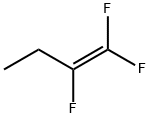
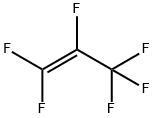


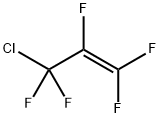

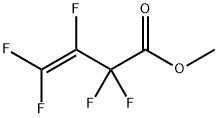
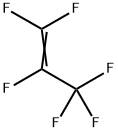
You may like
-
 2033-24-1 98%View Details
2033-24-1 98%View Details
2033-24-1 -
 42831-50-5 5-METHYLISOXAZOLE-4-CARBOXYLIC ACID 98%View Details
42831-50-5 5-METHYLISOXAZOLE-4-CARBOXYLIC ACID 98%View Details
42831-50-5 -
 1975-50-4 98%View Details
1975-50-4 98%View Details
1975-50-4 -
 2-HYDROXY BENZYL ALCOHOL 98%View Details
2-HYDROXY BENZYL ALCOHOL 98%View Details
90-01-7 -
 2-Chloro-1,3-Bis(Dimethylamino)Trimethinium Hexafluorophosphate 221615-75-4 98%View Details
2-Chloro-1,3-Bis(Dimethylamino)Trimethinium Hexafluorophosphate 221615-75-4 98%View Details
221615-75-4 -
 61397-56-6 CIS BROMO BENZOATE 98%View Details
61397-56-6 CIS BROMO BENZOATE 98%View Details
61397-56-6 -
 14714-50-2 (2-Hydroxyphenyl)acetonitrile 98+View Details
14714-50-2 (2-Hydroxyphenyl)acetonitrile 98+View Details
14714-50-2 -
 118753-70-1 98+View Details
118753-70-1 98+View Details
118753-70-1